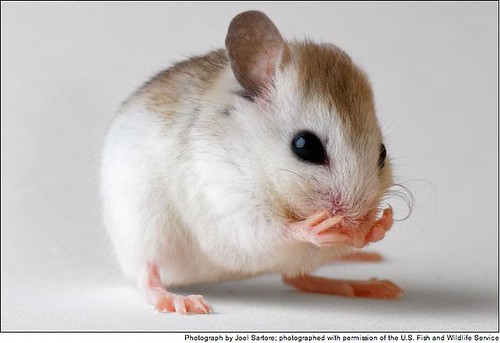tags: St. Andrew Beach Mouse, Peromyscus polionotus peninsularis, Joel Sartore, National Geographic, image of the day
St. Andrew Beach Mouse (Peromyscus polionotus peninsularis)
6,000 (Estimates range from 3,500 to 6,000).
Image: Joel Sartore/National Geographic [larger view].
Joel Sartore has shared some of his work on this blog before, so I am thrilled to tell you that National Geographic also appreciates his exemplary work. You can view more endangered animals of the United States that were photographed by the talented Joel Sartore here at National Geographic online. All images appear here by permission of National Geographic online.


Okay, I didn't think mice were so cute when they were pooping all over my house and chewing wires inside the walls. But that lil guy is cute.
i also have those horrific filthy little beasts stampeding through my humble abode (fortunately, i caught two this morning on a sticky trap), but these pest mice are actually introduced from Europe, and are not our native species.
ahhh so cute!!!!!!!!!